
CELL
metrics 2024
Exploring the intricate world of cellular processes.
Introduction
CELL is a premier academic journal in the field of Biochemistry, Genetics, and Molecular Biology, published by CELL PRESS. Founded in 1974, this esteemed journal has steadfastly contributed to advancing our understanding of cellular processes and organisms, making it integral for researchers and practitioners alike. With an impressive impact factor that places it in the Q1 category of its field, CELL ranks #1 out of 221 in general biochemistry and genetics, achieving a remarkable 99th percentile in Scopus rankings. Though it is not currently an open-access publication, the journal regularly disseminates high-quality research that impacts the scientific community significantly. Researchers, students, and professionals seeking to stay at the forefront of innovative discoveries and methodologies in molecular biology will find CELL an invaluable resource through its comprehensive articles and reviews.
Metrics 2024
 24.34
24.34 45.50
45.50 49.00
49.00 892
892Metrics History
Rank 2024
Scopus
IF (Web Of Science)
JCI (Web Of Science)
Quartile History
Similar Journals

Cell Discovery
Leading the Charge in Cell Biology ResearchCell Discovery, published by SPRINGERNATURE, is a premier open access journal in the dynamic fields of Biochemistry, Cell Biology, Genetics, and Molecular Biology. Since its inception in 2015, this journal has established itself as a key platform for disseminating high-impact research and is recognized with a Q1 ranking across all its core categories for the year 2023. With its remarkable Scopus rankings—7th in Genetics, 9th in Biochemistry, 13th in Molecular Biology, and 15th in Cell Biology—Cell Discovery positions itself among the elite journals in life sciences, showcasing the most innovative breakthroughs and comprehensive reviews. Based in the United Kingdom, this journal operates under an open access model, ensuring that groundbreaking discoveries are readily available to researchers, professionals, and students around the globe. With a commitment to advancing scientific knowledge, Cell Discovery welcomes contributions that push the frontiers of our understanding in cellular and genetic sciences.

npj Aging and Mechanisms of Disease
Championing Open Access to Aging Researchnpj Aging and Mechanisms of Disease is a leading open-access journal dedicated to advancing the understanding of the biological mechanisms underlying aging and age-related diseases. Published by NATURE PORTFOLIO in the United Kingdom, this journal has established itself as a vital resource within the fields of Aging and Geriatrics and Gerontology, proudly holding a prestigious Q1 ranking in both categories as of 2023. With an impressive Scopus ranking, placing it in the top 10 for Geriatrics and Gerontology, and the top 9 for Aging, the journal is committed to disseminating high-quality, peer-reviewed research that offers innovative insights and fosters collaboration among researchers and practitioners. Since its inception in 2015, npj Aging and Mechanisms of Disease has embraced the open-access model, ensuring that groundbreaking findings are freely available to all, thereby promoting widespread knowledge-sharing within the scientific community. This journal serves as an essential platform for those seeking to explore the complex interplay of genetic, molecular, and environmental factors that influence aging and its associated challenges.

GeroScience
Connecting Scholars in the Quest for LongevityGeroScience, published by Springer, is an esteemed open-access journal that focuses on the multidisciplinary field of aging research. Since its inception in 2017, the journal has quickly established itself as a leader in its field, achieving impressive Q1 quartile rankings across various categories, including Aging, Cardiology and Cardiovascular Medicine, Geriatrics and Gerontology, and Complementary and Alternative Medicine, as per 2023 evaluations. With a significant impact factor that underscores its influence and reach in academia, GeroScience aims to disseminate high-quality research that addresses the complex challenges and advancements related to aging. Its accessible publication format fosters greater dissemination of knowledge and encourages collaboration among researchers, practitioners, and students eager to contribute to the growing body of work on age-related health issues. As it continues to thrive, GeroScience remains a pivotal resource for anyone looking to stay at the forefront of aging research.
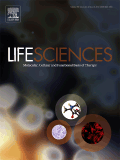
LIFE SCIENCES
Pioneering research at the forefront of biochemistry and genetics.LIFE SCIENCES, published by PERGAMON-ELSEVIER SCIENCE LTD, is an esteemed international journal that has been advancing the field since its inception in 1962. With an ISSN of 0024-3205 and an E-ISSN of 1879-0631, it serves as a critical forum for researchers, professionals, and students within the realms of biochemistry, genetics, molecular biology, medicine, and pharmacology. Currently ranked in the Q1 category across multiple disciplines, including a remarkable 2nd rank in General Pharmacology, Toxicology, and Pharmaceutics, the journal maintains a prestigious position in academic circles, evidenced by its high impact factor and significant percentile ranks. While LIFE SCIENCES is not an open-access journal, it remains dedicated to publishing high-quality, peer-reviewed research that pushes the boundaries of knowledge and fosters innovation. With converged research interests leading into 2024, LIFE SCIENCES continues to be a pivotal resource for the dissemination of influential findings, making it an indispensable tool for those engaged in the life sciences.
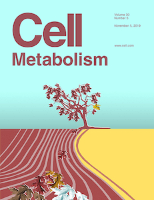
Cell Metabolism
Illuminating the pathways of health and disease.Cell Metabolism is an esteemed journal published by CELL PRESS, dedicated to advancing the understanding of metabolic processes within cell biology, molecular biology, and physiology. With an impactful 2023 ranking placing it at Q1 in multiple categories and earning a distinguished position in the top percentiles of its respective fields, this journal serves as an essential resource for researchers, professionals, and students who are investigating the dynamic roles of metabolism in health and disease. Its rigorous peer-review process ensures high-quality publications that reflect the latest advancements in metabolic research. Since its inception in 2005, Cell Metabolism has become a pivotal platform for disseminating critical findings that not only expand scientific knowledge but also foster innovative approaches to tackle metabolic disorders. By prioritizing accessibility and scholarly excellence without the Open Access model, it remains a premier source for cutting-edge research insights.

BIOGERONTOLOGY
Fostering Global Dialogue on Age-Related MechanismsBIOGERONTOLOGY, published by SPRINGER, is a premier journal dedicated to the interdisciplinary study of biological aging processes and their implications for health and longevity. With an ISSN of 1389-5729 and an E-ISSN of 1573-6768, this journal features cutting-edge research that addresses critical questions in the fields of aging, geriatrics, and gerontology. Ranking impressively in the top quartiles, particularly as Q1 in Gerontology, BIOGERONTOLOGY is recognized for its contributions to advancing the understanding of aging at both molecular and systemic levels. The journal’s rich repository of scholarly articles provides valuable insights for researchers, healthcare professionals, and students alike, fostering a deeper comprehension of age-related biological mechanisms. Although not an open-access journal, it is highly regarded with an impact factor that reflects its significant role in the academic community. The journal spans from 2000 to 2024, ensuring a broad historical context for its studies, and is based in the Netherlands, with its administrative office located at One New York Plaza, Suite 4600, New York, NY 10004, United States. Engaging with BIOGERONTOLOGY means joining a global dialogue on the science of aging and the implications it holds for humanity.

EXPERIMENTAL CELL RESEARCH
Unveiling Innovations in Experimental ResearchEXPERIMENTAL CELL RESEARCH is a highly respected journal published by Elsevier Inc, specializing in the dynamic and ever-evolving field of Cell Biology. With an impact factor positioned in the Q2 quartile for 2023, it ranks at the 124th position out of 285 in the Scopus Ranks, indicating a solid reputation among peers in the domains of biochemistry, genetics, and molecular biology. Since its inception in 1950, the journal has contributed significantly to the dissemination of groundbreaking research, providing a platform for studies that explore the nuances of cellular mechanisms, processes, and experimental methodologies. Although the journal currently does not offer open access, its commitment to high-quality, peer-reviewed research continues to attract submissions from leading scientists and scholars across the globe. Researchers, professionals, and students alike will find this journal an invaluable resource for keeping abreast of current developments and innovative breakthroughs in cellular science.
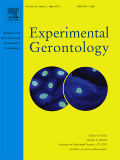
EXPERIMENTAL GERONTOLOGY
Exploring Interdisciplinary Approaches to Enhance HealthspanEXPERIMENTAL GERONTOLOGY is a prestigious journal published by PERGAMON-ELSEVIER SCIENCE LTD, dedicated to the evolving field of aging research. With a rich history dating back to 1964 and continuing through 2024, this journal aims to advance the understanding of the biological processes underlying aging and develop interdisciplinary approaches to improve healthspan. ENCOMPASSING a broad scope, including *biochemistry*, *cell biology*, *endocrinology*, *genetics*, and *molecular biology*, it holds impressive rankings in the 2023 Scopus Ranks, featuring in Q1 and Q2 quartiles across multiple categories. This positions it as a vital resource for researchers and professionals focused on gerontology and related fields. As a subscription-based journal without open access, EXPERIMENTAL GERONTOLOGY ensures the dissemination of high-quality research through rigorous peer review, making it an essential publication for those aspiring to remain at the forefront of aging studies.
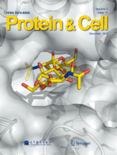
Protein & Cell
Advancing Knowledge in Biochemistry and Cell BiologyProtein & Cell, published by Oxford University Press, is a distinguished international journal focusing on cutting-edge research in the fields of biochemistry, biotechnology, cell biology, and drug discovery. This open access journal, active since 2014, is dedicated to disseminating innovative findings that advance our understanding of protein functions and cellular processes, making it an essential resource for researchers, professionals, and students alike. With an impressive 2023 impact factor reflected in its Q1 ranking across multiple categories such as Biochemistry, Drug Discovery, and Cell Biology, 'Protein & Cell' stands at the forefront of scientific research, driving collaboration and discussion in the scientific community. Researchers can access the journal freely online, fostering a global exchange of knowledge and contributing to significant advancements in medicine and biotechnology. Located in the United Kingdom, the journal strives to be a pivotal platform for impactful research that influences future studies and applications.
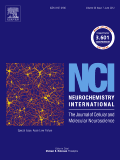
NEUROCHEMISTRY INTERNATIONAL
Fueling Scientific Collaboration in Neurobiological InnovationsNEUROCHEMISTRY INTERNATIONAL, published by Pergamon-Elsevier Science Ltd, offers a premier platform for researchers and professionals in the realms of cell biology and cellular and molecular neuroscience. Established in 1980 and continuing its passion for advancing the field, this esteemed journal enhances scientific collaboration with a notable 2023 Q2 ranking in both relevant categories, placing it among the top-tier publications in its discipline with a Scopus rank of 23/97 for Cellular and Molecular Neuroscience. With its focus on groundbreaking research, the journal provides a wealth of vital data and insights that drive forward our understanding of neurochemistry and its implications in health and disease. While not an Open Access journal, NEUROCHEMISTRY INTERNATIONAL is integral for professionals, academics, and students aiming to stay at the forefront of neurobiological research innovations, making significant contributions to both academia and clinical applications.